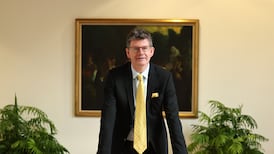A Saudi citizen has been identified by Kuwait as being the suicide bomber who detonated his explosives at a Shia mosque in Kuwait during noon prayers last Friday, killing 27 members of the congregation and wounding 227. Islamic State (IS) has admitted the attack, the first of its kind in Kuwait.
The incident was one of four terrorist attacks on three continents, in Tunisia and Somali in Africa, France in Europe and Kuwait in Asia, two claimed by IS. They came ahead of the first anniversary of the June 29th proclamation by Islamic State leader Abu Bakr al-Baghdadi of a caliphate in the Syrian and Iraqi territory under the cult’s control. Since then, 21 radical factions have pledged their allegiance to IS.
The Kuwaiti interior ministry has named the bomber as Fahd Suliman Abdeu-Muhsen al-Qabaa, revealing he had arrived in the emirate only a few hours before the operation and had stayed in a house owned by a Kuwaiti citizen who followed a “fundamentalist and deviant ideology”. The bomber was driven to the Imam al-Sadeq mosque by an “illegal resident” identified as Abdulrahman Sabah Eidan Saud.
IS claimed two deadly explosions in May on successive Fridays on Shia mosques in neighbouring Saudi Arabia, where 25 people died. Both attacks took place in the oil-rich Eastern Provinces where Shias make up 30 per cent of the population, although overall they amount to about 12-15 per cent.
IS issued a communique after the second event, stating, “In a blessed martyrdom operation, a polytheistic monument was targeted that [the Shia community] established in Sunni areas to spread their polytheism.”
This communique reflects the attitude of the Saudi Sunni puritanical clerical establishment, which is tied to the ideology of 18th-century preacher Mohamed ibn Abdul Wahhab, whose alliance with Mohamed ibn Saud brought about the emergence of the kingdom in 1932 under the reigning dynasty.
The Saudi view was expressed by a preacher in the grand mosque at Mecca Adel al- Kalbani when, in a 2009 BBC interview, he said all Shias were apostate, unbelievers and should be hunted down and killed or “repatriated”, that is deported.
Saudi Shias complain of religious and economic discrimination. They are regarded as heretics, traitors and non-Muslims. Leading figures of the largely poor community are its sole representatives in dealings with the government.
Shias are excluded from jobs in the public service, the military and security agencies. Saudi Arabia cracked down harshly on Shia protests during the 2011 Arab Spring when Shias demanded equal rights and changes in the structure of the kingdom, which Shias regard as “apartheid.”
Since the 1979 Shia Iranian revolution and attempts to its rival ideology, Saudi Arabia has stepped up its anti-Shia campaign both at home and abroad, using satellite television, social media, YouTube and Twitter, and pressing Sunni allies in the Gulf to follow suit.
Although officially barred from fighting abroad, Saudis constitute a large proportion of IS and other radical fighters recruited for the campaigns in Syria and Iraq, where the governments are regarded as Shia and pro-Iranian.











